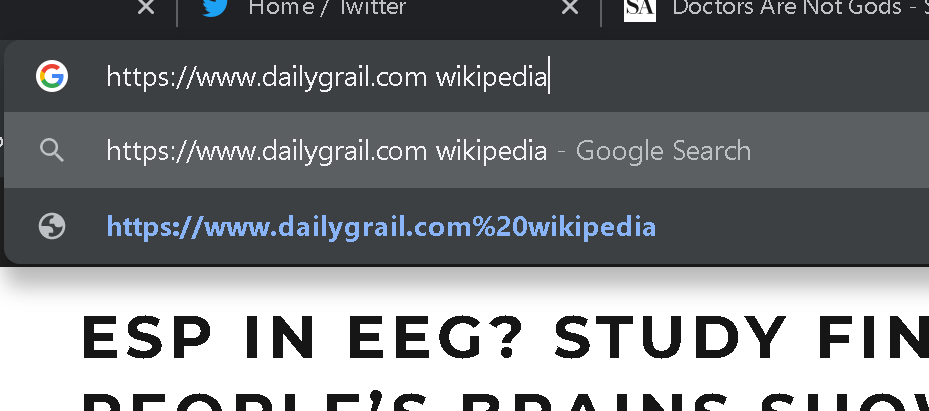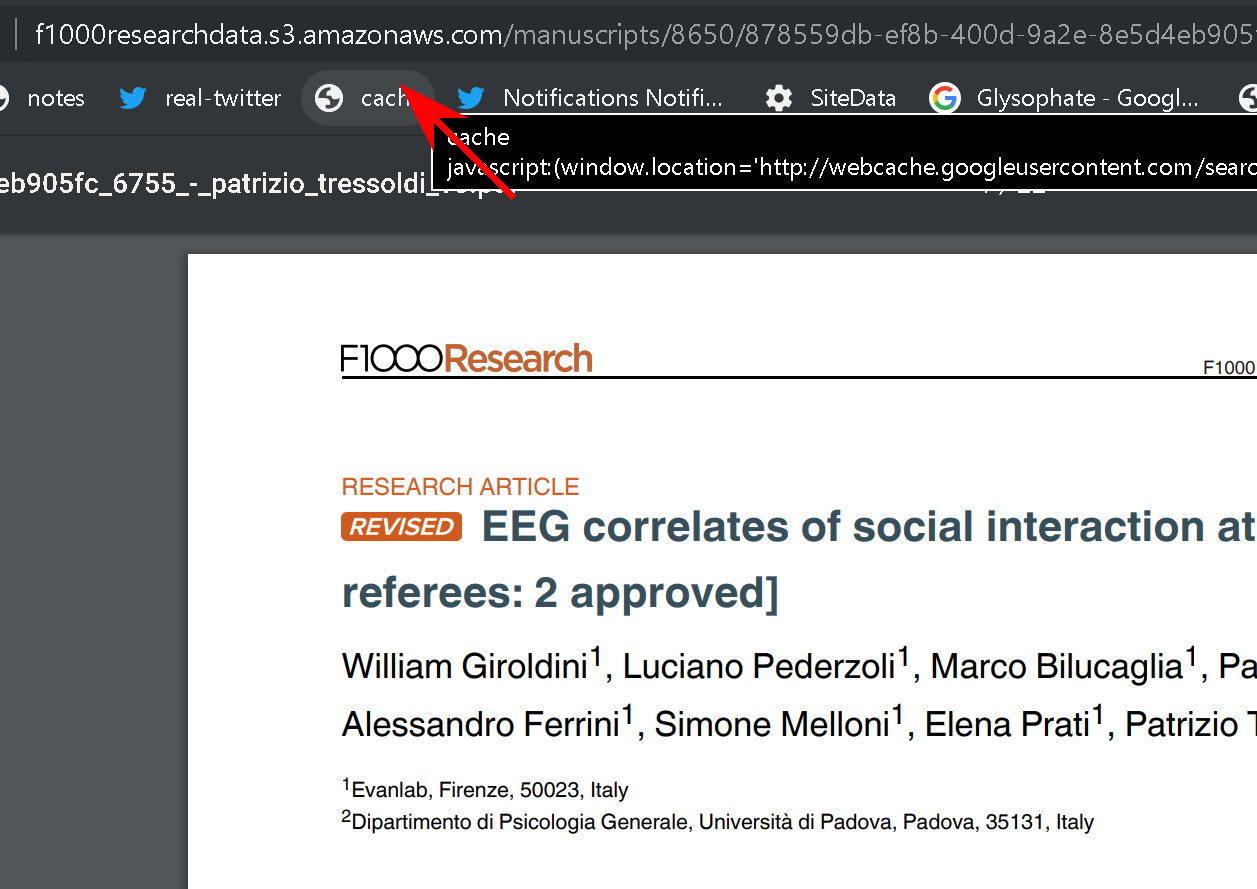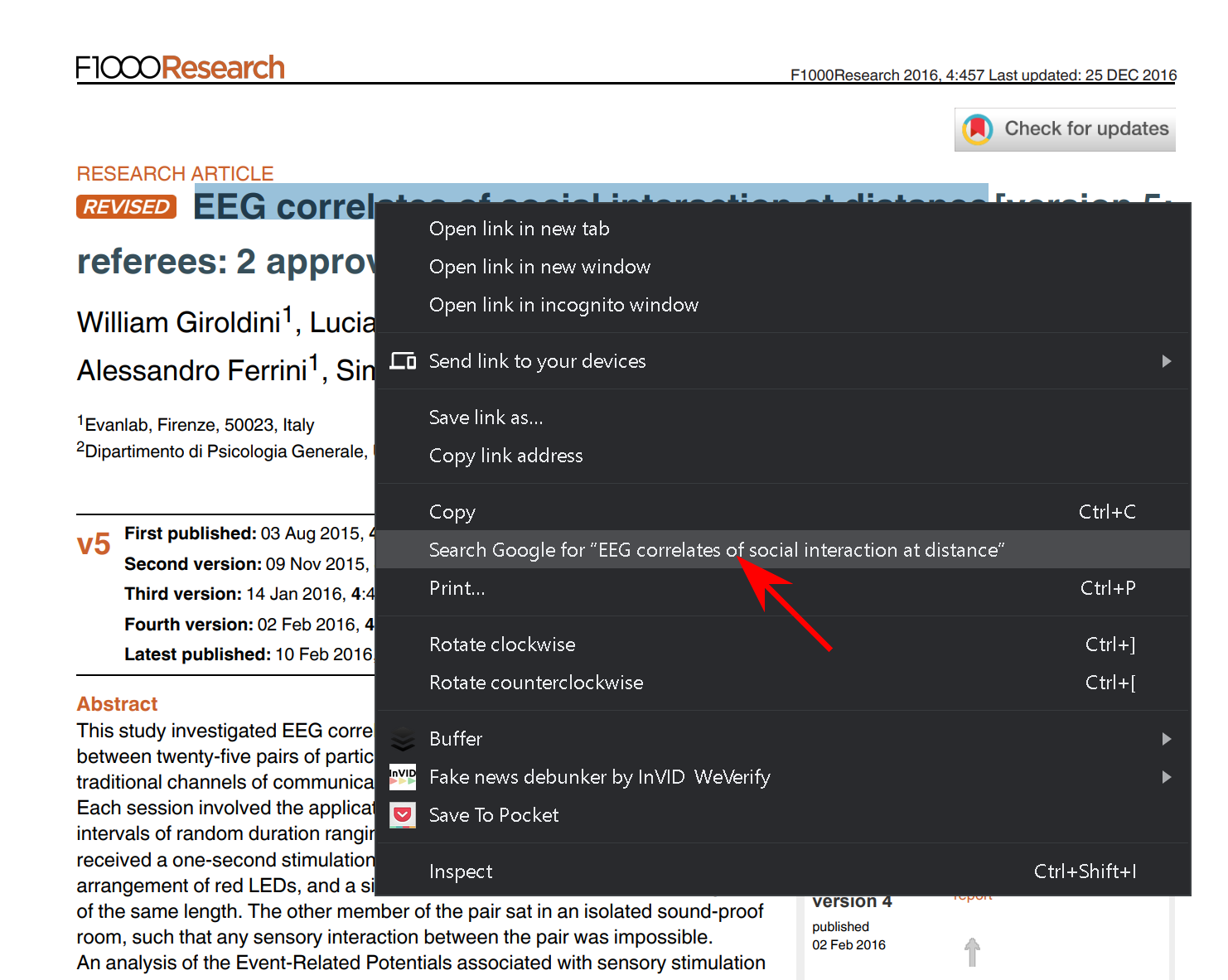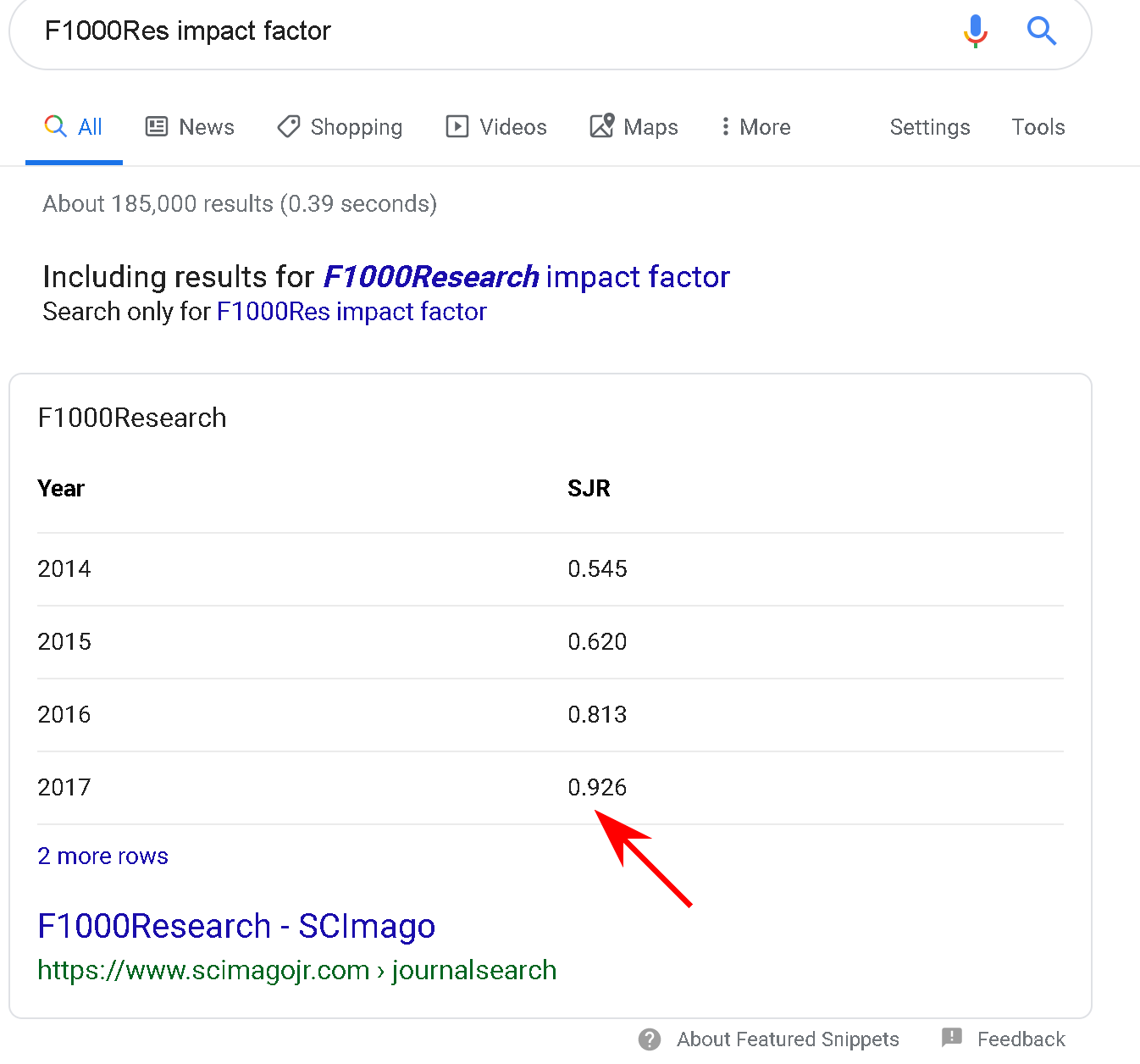ESP in EEG
Date updated: November 29, 2019 [Up]Material is free to copy, use, and modify.
ESP (or extrasensory perception) could be a legitimate area of inquiry, but in practice it is rife with pseudoscience Is this article worth taking seriously?

Screen capture of an article claiming freinds placed in different rooms show "neural spikes" when the other's brain is stimulated.
We start by looking up this publication in Wikipedia. It probably won't show up, but just in case....

Screen capture of searching the URL in Wikipedia using the omnibar.
In this case we don't find anything.

Google search results for a URL Wikipedia search.
We could go a couple different directions with this, But let's see where the study was published. News of ESP -- minds communicating silently with other minds through a wall -- would be big news, so we should expect to see this is journal of some repute.

Screen capture with arrow pointed to the link to the artile. It's labeled the title of the paper: "EEG correlates of social interaction at a distance"
When we click through we find it just links to a PDF, not an actual journal. This could could be OK, but we need to find out where it was published.(Remember: Trace claims, quotes, and media to the original context).

Snapshot of article with arrow pointing to URL, indicating that the document is not housed on a journal site.
OK, we're going to start by right-click Google searching, but quickly switch from general search to Scholar when we hit the SERP.

Screen capture of right-click searching the title.
Bingo. The page shows up here. These results at top are from Google Scholar.

The Google SERP, showing hits on our article name toward the top.
You'll notice this is on a .gov domain. But the government site here is just an article clearinghouse, it's not the journal itself.

Screenshot of article indicating the .gov domain it is housed on.
So we look up the impact factor of the journal mentioned (F1000Research). And we find it has an impact factor of less than one.

Search on F1000Res impact factor, showing yearly impact factors.
An impact factor of less than one should always be treated with extreme caution. But in this case we should be even more suspicious of it.
Why? Because we're looking for proportionality -- we're looking for the claim to be published in a venue that matches the size of the claim. Proving ESP would be a big deal. If it was a solid result, we'd expect to see it in a much bigger publication, something well-cited and well known.
For this claim, we can probably stop
here. If you wanted to go through the article and see what it
says, you could. But in the interest of spending your
attention on things worthwhile it's enough to say that if this
was a solid study it would appear somewhere of note, not an
open access journal with a sub-1 impact factor.